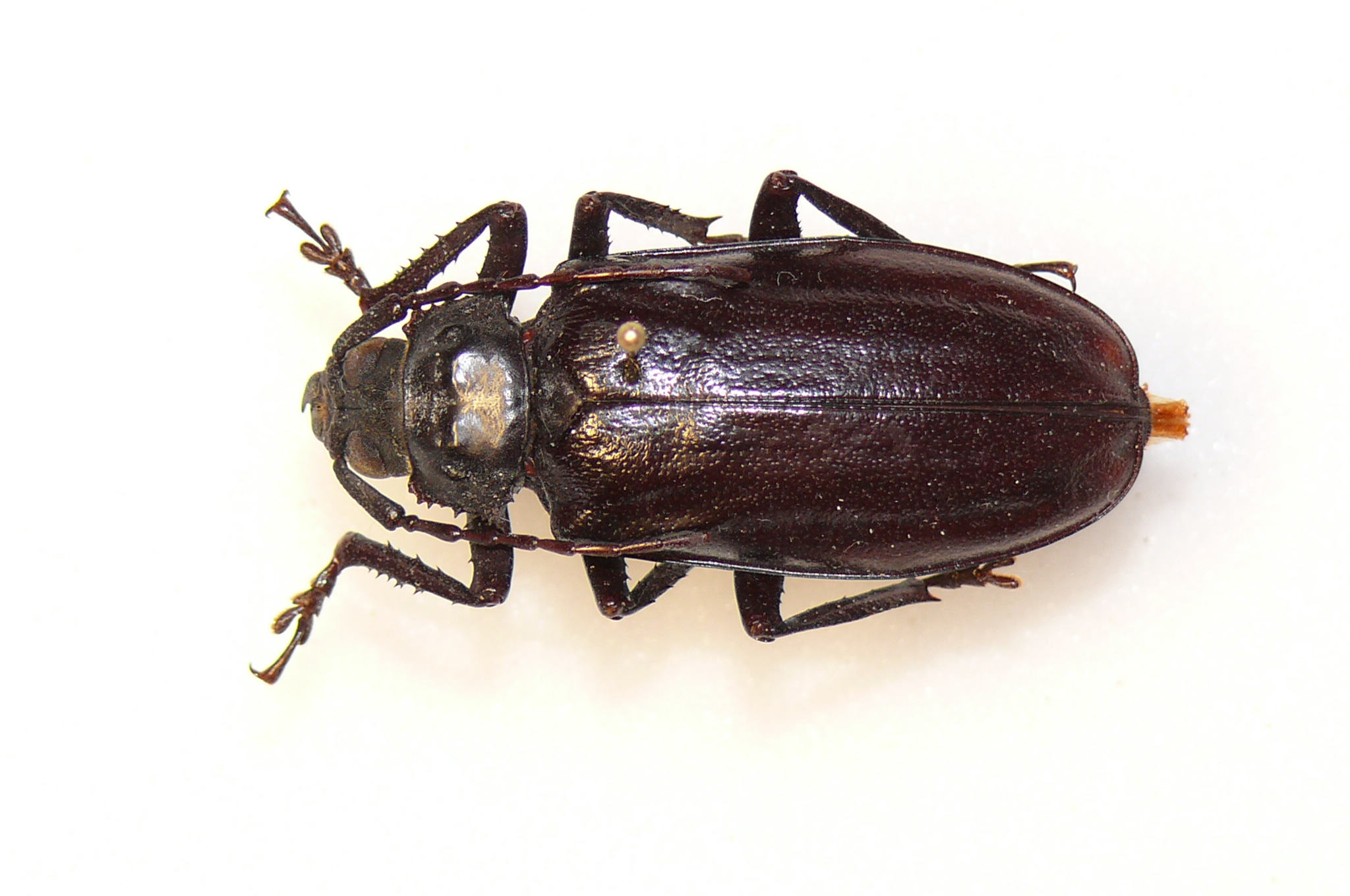| T O P I C R E V I E W |
| Jiri |
Posted - 10/02/2013 : 10:51:25

413.97 KB
...and last one, from Australia, New Queensland.
I think it is Paroplites, but I am not sure.
Thank you for the help!! |
| 4 L A T E S T R E P L I E S (Newest First) |
| Francesco |
Posted - 01/03/2013 : 20:03:59
It seems to be a female of Olethrius tyrannus tyrannus Thomson, 1861.
This species should have two sub-triangular almost smooth areas along the median line of the pronotum, but the reflections of this picture make the identification only guessable. |
| Francesco |
Posted - 14/02/2013 : 10:24:30
I do not think: O. laevipennis (described from only one male, here the holotype) is characterised by nearly completely unpunctuated and smooth elytra.
This seems to me O. tyrannus (types here) or a hairless specimen of O. scabripennis (holotype here). But I have to check the pictures of the specimens I have observed.
The former species has already been recorded as in introduced in Australia. |
| Jiri |
Posted - 14/02/2013 : 08:50:59
Thank you so much!!
It means - Olethrius laevipennis? |
| Francesco |
Posted - 13/02/2013 : 17:28:56
Hi Jiri, welcome to the new Forum!
According to me, it is a female of Olethrius.
The difference between such Rhemphanini is especially visible in males; however, the third antennomere is much longer in Paroplites.
|


